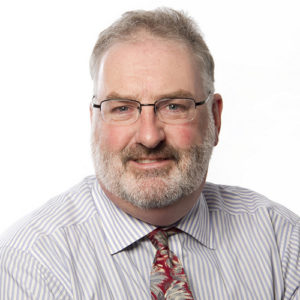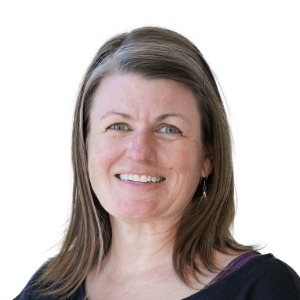Background
In 2016 and 2017, Wisconsin Sea Grant led an integrated assessment of changing Lake Michigan water levels and their impacts on coastal bluffs and beaches between Shorewood and Port Washington in southeastern Wisconsin. Lake Michigan water levels were below the long-term average from 1999 to 2014, but began to rise, and rise rapidly, from record low water levels in January 2013. The integrated assessment took into account this variability of Great Lakes water levels and how those levels affect the stability of coastal bluffs and beaches.
Policy options, adaptive actions, outreach and decision tools resulted from this study. They are applicable in Wisconsin, as well as in other areas around the Great Lakes.
A team of investigators representing the disciplines of coastal engineering, geology, urban and regional planning, law, policy studies, ecology, landscape architecture and social science added to work completed during a preliminary planning phase in 2015. The project engaged local government officials, coastal property owners, and broader partners such as the Southeastern Wisconsin Regional Planning Commission, Wisconsin Coastal Management Program, Wisconsin Emergency Management, Wisconsin Department of Natural Resources, and Association of State Floodplain Managers.
Funding for the integrated assessment came from $10,000 and $50,000 awards by the Graham Sustainability Institute at the University of Michigan. It began in March 2015 and extended through April 2017.
[su_accordion][su_spoiler title=”What is an integrated assessment?” open=”no” style=”default” icon=”plus” anchor=”” class=””]
An integrated assessment is an approach to address complex and challenging problems where facts are uncertain, values in conflict, stakes are high and decisions are urgent. It has been used to offer policy alternatives for other thorny issues in the Great Lakes region, such as hydraulic fracturing, stormwater management, and fish consumption advisories.
Integrated assessments bring together research teams that gather information formulated by and from multiple sources—datasets, models and other technical findings—and ensure that many voices are involved in the process including, importantly, the public.
An integrated assessment:
- Defines and clarifies complicated issues.
- Leverages research across disciplines.
- Builds partnerships.
- Identifies and evaluates options for addressing the situation at hand.
- Develops tools and information to help turn ideas into action.
[/su_spoiler] [/su_accordion]
[su_accordion][su_spoiler title=”What was the approach for the integrated assessment?” open=”no” style=”default” icon=”plus” anchor=”” class=””]
This project consisted of a planning grant and three phases of the full integrated assessment:
Planning Grant: The planning grant was conducted from March to August 2015. The primary activities included interviews with stakeholders, partners and investigators; development of an on-line bibliography of relevant research on variable water levels and coastal bluffs; authoring a white paper on finding and organizing existing research, data and decision tools; and holding a workshop to provide information about the Integrated Assessment and determine if there was support for Wisconsin to continue participation in the project.
- Planning grant report [download, pdf format]
Phase 1: Synthesis of existing research and data to better understand the effects of increased variability of Lake Michigan water levels on coastal bluffs and beaches. This phase included a workshop on March 31, 2016 with investigators and partners. The workshop leveraged the on-line bibliography and prioritized the most relevant reports, studies and data for the Integrated Assessment. The report for phase 1 described the status and trends concerning changing water levels and coastal bluffs between Shorewood and Port Washington and the corresponding consequences of those trends.
- Phase 1 report on Interdisciplinary Synthesis of Existing Research [download, pdf format]
- Phase 1 presentation 5/17/16 [watch, 10 minutes from 1:26 to 1:36 of the two-hour video]
Phase 2: Extensive community conversations to identify and prioritize policy options for local governments, adaptive actions for private property owners, and outreach and decision tools for both groups. Three meetings occurred during summer 2016. The first meeting covered the Town and City of Port Washington and the Town of Grafton in the northern part of the project area. It was held at the American Legion Hall in Saukville on June 15th with an attendance of 45. The second meeting covered the City of Mequon in the middle of the project area. It was held at the North Reuter Pavilion in Mequon on July 27th with an attendance of 55. The third meeting covered the four villages of Bayside, Fox Point, Whitefish Bay and Shorewood in the southern part of the project area in northern Milwaukee County. It was held at the Schlitz Audubon Nature Center in Bayside on August 17th with an attendance of 43. Project staff reviewed the results of a brainstorming exercise at each of the three meetings to capture hopes, wishes, concerns and issues and interviewed investigators and partners to develop 29 response options to analyze and prioritize. This was accomplished using an audience polling system at a three-hour evening meeting at the Jewish Community Center in Whitefish Bay on October 27th and was presented to local officials and project partners the following morning.
- Phase 2 report on Response Options [download, pdf format]
- Phase 2 webinar presentation 11/10/16 [watch, 57 minutes]
Phase 3: A preferred set of policy options, adaptive actions and decision tools intended to lead to a measurable increase in the resilience of bluffs in the study area to coastal erosion.
- Adapting to a Changing Coast: Options and Resources for Lake Michigan Property Owners [download, pdf format]
- Adapting to a Changing Coast: Options and Resources for Local Officials in Southeastern Wisconsin Coastal Communities [download, pdf format]
- Great Lakes Water Levels – Integrated Assessment Report, University of Michigan [executive summary], [full report], pdf format
[/su_spoiler][/su_accordion]
[su_accordion][su_accordion][su_spoiler title=”What is the status of water levels and coastal bluffs; what are the trends?” open=”no” style=”default” icon=”plus” anchor=”” class=””]
- Water levels have been increasing during the last four years. Lake Michigan water levels were below the long-term average from 1999 to 2014 and quickly jumped above that average in spring 2014.
- From 1976 to 2012, there was a trend towards more stable coastal bluffs in the study area. Despite the general trend, new bluff failures continue to appear in the study area.
- There has been an increase in shoreline structures in the study area built since high water levels in 1976. Specifically, from 1976 to 2007, armoring of the Lake Michigan shoreline increased from 9.6% to 27.3% in Ozaukee County and from 44.6% to 62.7% in Milwaukee County.
- In recent years, waves are causing new bluff toe failures influenced by decreased beach widths.
- Lakebed downcutting has been observed at one location within the study region.
- In recent years, there have been legislative changes in Wisconsin that favor an increase in private property rights.
- The rapid rise in Lake Michigan water levels since January 2013 is causing concern among property owners and local officials.
[/su_spoiler][/su_accordion]
[su_accordion][su_accordion][su_spoiler title=”What are the consequences of these trends?” open=”no” style=”default” icon=”plus” anchor=”” class=””]
- New single-property shoreline protection structures are designed and constructed with little planning for potential regional impacts.
- Properties with shoreline structures had bluffs with higher factors of safety than those with no structures.
- Water levels will remain high in the near term. Waters levels will probably fluctuate in the longer term, but not likely go down and stay down.
- New bluffs are failing that were initially stable, especially those adjacent to newly built shoreline/bluff protection structures.
- Lakebed downcutting is expected to continue due to the prolonged low water level period.
- Beaches are likely to continue to lessen in width and/or disappear. It is anticipated that the current higher water levels above long-term averages in Lake Michigan coming after the extended period of low levels could have an impact on the nearshore bathymetry and beaches, and correspondingly affect the stability of coastal bluffs.
- Waves will continue to cause bluff toe erosion if no shore protection is present.
- The increase in shoreline structures will occur on a piecemeal basis.
- The increase in shoreline armoring will decrease the amounts of regional littoral material—that is, earth material near the shore—in reach with the structures. The significance of this increase in percentage of shoreline armored not only in just the study area but also in the Wisconsin Lake Michigan shoreline region-wide is that there are significant changes in the historical availability of littoral sediment supply. That change being a regional starvation of previously available sediment now taken out of what would have been natural littoral drift. The result of this starvation would mean greater regional erosion potential such that the impacts of individual shoreline structures should be considered within a regional sediment analysis.
- The presence of a structure at the toe of the bluff showed a large increase to the bluffs factor of risk when compared to bluffs with no type of shoreline protection. It is important to note that this result looks only at the bluff immediately behind the shoreline protection and not adjacent bluffs which may be impacted by the neighboring structure (regional sediment management).
- Lakebed downcutting will continue to occur and influence wave energy at the bluff toe as well as changes to regional sediment quantities. A lakebed study concluded that “for future coastal development and management in the Great Lakes, the local geomorphologic and hydrodynamic conditions have to be taken into consideration in the planning and designing stages to provide a more thorough picture on the consequences of coastal structures.”
[/su_spoiler][/su_accordion]
[su_accordion][su_accordion][su_spoiler title=”Who will benefit from the project?” open=”no” style=”default” icon=”plus” anchor=”” class=””]
- Homeowners who want to maintain their property in the best possible way.
- Those who enjoy Lake Michigan’s shoreline, including beaches.
- Local planners who oversee public and private property zoning decisions.
- Realtors and insurance professionals who have an interest in well-maintained, and thus less risk to, lakeside property.
- Professionals such as engineers, consultants and those in the landscaping industries who would benefit from guidance on management.
[/su_spoiler][/su_accordion]
[su_accordion][su_accordion][su_spoiler title=”Who guided the project” open=”no” style=”default” icon=”plus” anchor=”” class=””]
David Hart is Sea Grant’s assistant director for extension. He directs a staff of outreach specialists who extend coastal science throughout Wisconsin, the Great Lakes region and beyond. He joined the Wisconsin Sea Grant Extension team as a scientist in 2002, after working with Sea Grant for eight years on coastal geographic information systems (GIS) applications through the University of Wisconsin-Madison Land Information and Graphics Facility. As one of the few Sea Grant GIS specialists in the country, Hart provides assistance to local governments and other coastal constituents in the areas of mapping, community planning, coastal hazards, land use and climate adaptation. Hart holds an B.S. in Natural Resources Policy and Management from the University of Michigan, a Masters in Urban and Regional Planning from the University of New Orleans and a Ph.D. in Land Resources from UW-Madison.
Deidre Peroff is Sea Grant’s social scientist. She joined the program in January 2016. She has expertise in a range of social science methods applied to socio-economic and environmental issues and specific interest in sustainable tourism. She holds an M.S. in geography from Western Washington University and a Ph.D. from the Department of Parks, Recreation and Tourism Management at North Carolina State University.
Bert and Linda Stitt provided facilitation support. The longtime consultants of Stitt Facilitations, based in Madison, Wis., espouse the following goals in their approaches to issues, including coastal bluff management: full participation, reflection, decision-making and collaborative action.
PROJECT STAFF
Gene Clark, Coastal Engineering Outreach Specialist, Wisconsin Sea Grant
Julia Noordyk, Coastal Storms Outreach Specialist, Wisconsin Sea Grant
Andrew Mangham, formerly Student, Water Resources Management Program, UW-Madison, now a hydrologist with the National Weather Service in Chanhassen, Minnesota
Adam Bechle, J. Philip Keillor Science-Policy Fellow, Wisconsin Coastal Management Program and Wisconsin Sea Grant
Ben Kranner, formerly Student, Department of Civil and Environmental Engineering, UW-Madison and now a graduate student at Stanford University
PROJECT INVESTIGATORS
John Janssen, Professor, School of Freshwater Sciences, UW-Milwaukee
Jenny Kehl, Professor, School of Freshwater Sciences, UW-Milwaukee
Jim LaGro, Professor, Department of Urban and Regional Planning, UW-Madison
Adam Mednick, formerly Beach Health Specialist, Wisconsin Sea Grant and now with the Wisconsin Department of Natural Resources
David Mickelson, Emeritus Professor and Senior Scientist, Department of Geoscience, UW-Madison
Brian Ohm, Professor, Department of Urban and Regional Planning, UW-Madison
Chin Wu, Professor, Department of Civil and Environmental Engineering, UW-Madison
For more information, David Hart, dhart@aqua.wisc.edu or (608) 262-6515.
[/su_spoiler][/su_accordion]





